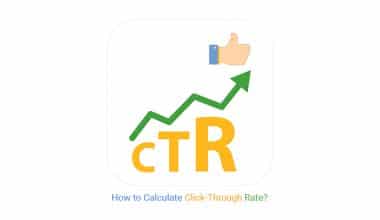Have you ever sat down to write a great email or prepare a gripping presentation only to find yourself fighting with passive voice as opposed to active voice? I’ve been there, and done that (and it was not pretty). As a Lamphills content writer, I rely heavily on active voice to create clear, succinct, and engaging communications. However, avoiding the passive voice might be difficult at times.
A recent Grammarly study discovered that passive voice formulations appear in more than 20% of all professional writing. This statistic emphasizes the use of passive voice and the importance of precise and succinct communication.
So, how can you go from a passive to an active voice in your writing to revitalize it and better connect with your audience? Here is my detailed guide on how to write in an active voice that includes personal insights and simple recommendations that many sites don’t generally offer.
Passive Vs. Active Voice
In English, there are two methods to organize sentences: active and passive voice, which serve various purposes depending on the context and desired emphasis.
Active Voice
In the active voice, the sentence’s subject carries out the action described by the verb. This structure emphasizes the performer of the action. It often follows the format:
Subject + Verb + Object
A case in point: “The manager submitted the report.”
In this case, “the manager” is the subject who is actively executing the action of submitting, and “the report” is the object that receives the verbal action.
Passive Voice
In passive voice, the verb acts on the sentence’s subject. The performer of the action may not be stated at all, or if mentioned, is usually part of a prepositional phrase beginning with “by.” The normal style is Object + Passive Verb (be + past participle) + by + Subject.
For example, “The report was submitted by the manager.”
Here, “the report” becomes the topic of the sentence, whereas “the manager” is stated subsequently as the person conducting the action, rather than as the major focus of the sentence.
When To Use Each
- Use active voice when you wish to be clear and direct, spotlight the performer, make your writing lively and straightforward, or keep your phrases short.
- Use passive voice when: the doer is unknown or unimportant, you want to stress the action or the recipient of the action, or you need to portray a formal tone.
Understanding when and how to use each voice enables more nuanced and successful written or spoken communication.
Understanding How To Write In Active Voice
Active voice makes your writing more powerful and straightforward. It allows the topic of your sentence to take action, making your message more clear and compelling. For example, “The marketing team developed a new strategy” is more direct and lively than “A new strategy was developed by the marketing team.”
Benefits of Using Active Voice
Let’s go deeper into why you need to write in an active voice in professional situations and the specific benefits it provides:
#1. Clarity and accountability
Active voice makes it evident who is carrying out the action, which is essential for assigning responsibility and accountability in professional communication. Active voice eliminates any possibility of misunderstanding or ambiguity by clearly defining the subject and the action being taken. This clarity promotes a culture of responsibility in which people are held accountable for their actions and decisions.
#2. Precision and directness
Active voice communicates information more clearly and plainly than passive voice. In professional writing, where clarity and conciseness are emphasized, an active voice enables you to deliver your idea effectively without adding additional complication or wordiness. This directness ensures that your message is delivered succinctly and with no opportunity for interpretation.
#3. Enhanced Engagement
Active voice is more engaging and lively than passive voice. In professional situations, when attracting and sustaining the reader’s attention is critical, an active voice helps to keep the reader interested and engaged with the subject. Presenting information actively and colorfully allows you to effectively explain your thoughts and attract the reader’s attention from the start.
#3. Improved workplace efficiency
According to research published in the Journal of Applied Psychology, using active voice lowers ambiguity and improves communication clarity in the workplace. This clarity promotes better understanding among team members, which boosts workplace productivity. When everyone is on the same page and clearly understands their duties and responsibilities, jobs are accomplished more efficiently.
#4. Professional Image and Credibility
Using an active voice in professional communication conveys a sense of confidence, competency, and authority. It displays that you have control over your message and can clearly articulate your views and ideas. This professionalism boosts your credibility and fosters trust with your target audience, whether they be colleagues, clients, or stakeholders.
How To Write In Active Voice In Professional Settings
- Business Emails: To ensure clarity and accountability, use active voice when making requests, orders, or proposals.
- Reports and proposals: Present your findings, recommendations, and action plans in an active voice to show authority and clarity.
- Press releases: Use active voice to highlight crucial messages and capture the reader’s attention, so increasing the impact of your press release.
By incorporating active voice into your professional writing, you may communicate with clarity, precision, and authority, thus increasing your effectiveness and success in the workplace.
Identifying Passive Voice
Understanding the structure of passive voice is crucial for spotting it in your work. Here’s a thorough breakdown:
- Look for “to be” verbs: These include verbs such as am, is, are, was, were, be, being, and been. When these verbs are used with a past participle (usually a verb ending in -ed), the sentence may be in a passive voice.
- Check for the agent: In passive phrases, the subject receives the action, and the action’s doer (agent) is usually mentioned after the verb phrase or omitted. For example, “The project was completed by the team” (agent mentioned) versus “The project was completed” (agent left out).
- Test using a stupid trick: Add “by zombies” following the verb. If the statement still makes sense, it is likely passive. Let’s say, for instance, “The budget was approved (by zombies).”
Rewriting Passive Constructions
Once you’ve recognized a passive sentence, you can change it to active voice by rearranging the pieces and, in some cases, adding missing features. Here’s a step-by-step guide:
- Identify the agent: Determine who is doing the action. This may be directly mentioned or assumed in the context.
- Move the agent into the subject position: Begin the sentence with the person who carried out the activity.
- Rearrange the verb: Convert the “to be” form and past participle to the main verb’s simple past or appropriate tense.
- Place the original subject as the object: The beneficiary of the action in the passive sentence becomes the object in the active sentence.
- Remove unneeded details: If the agent was previously excluded because it was clear or irrelevant, you can do the same in the active voice.
Example of Transformation from Passive To Active Voice
- Negative: “The marketing proposal was approved by the manager.”
- Participant: “The manager approved the marketing proposal.”
Exercises On How To Write In Active Voice
Practicing this conversion procedure can assist to reinforce your understanding and make it more intuitive. Here are some exercises.
- Daily revisions: Take a paragraph from a newspaper or a page from a book and write all passive sentences in active voice.
- Peer Review: Exchange emails or documents with a coworker, and challenge each other to identify and revise passive constructs.
- Reflect On Your Work: Examine your prior written work for patterns of passive use and revise them. This evaluation might help you identify and correct your writing habits in the future.
Improving Your Communication Strategy
Here in Lamphills, we understand the value of an active voice in developing dynamic and persuasive content. Our expertise can help you reframe your communications to make them more dynamic and successful, allowing you to reach and resonate with your target audience.
The Active Voice Audit Template: A Framework for Effective Writing
Many professionals fail to recognize and eliminate passive voice constructs in their work. This gap can be bridged using the Active Voice Audit Template.
Here’s the breakdown:
- Self-Audit: Identify passive voice compositions in your writing by finding sentences in which the subject receives the action rather than performing it.
- Verb Replacement: Replace weak verbs with powerful action verbs that communicate the intended message more clearly and effectively.
- Sentence Restructuring: Restructure sentences such that the active subject appears first, emphasizing their role in the action.
Using the Active Voice Audit Template, you may create a systematic strategy for identifying and eliminating passive voice in your writing, resulting in clear, succinct, and compelling communication.
After implementing the Active Voice Audit Template into my writing process, I noticed a significant improvement in reader engagement. My text got clearer, more succinct, and better able to hold the reader’s attention. This active voice-for-effect method significantly improved my communication skills.
Active Voice: Practical Tips and Exercises
Here are additional comprehensive guidelines and activities to help you improve your use of active voice, making your writing clearer and more engaging:
#1. Be direct
Identify the action and the actor. Before you write your sentence, determine who is conducting the action and what it is. This clarity at the planning stage avoids confusing constructs and ensures that the subject and verb are clearly and accurately linked.
Break down a complex sentence into its simple components (who does what). Rewrite the sentence such that the subject (the doer) comes first, followed by the verb.
#2. Simplify your sentences
Reduce Redundancies. Active voice is straightforward and efficient. Look for redundant or unneeded qualifiers in your phrases and remove them. For example, instead of expressing “She is going to be attending the meeting,” say “She will attend the meeting.”
Take a paragraph and push yourself to cut the word count by 10-20% without compromising the meaning, focusing on transitioning from passive to active constructions.
#3. Use strong verbs
Improve Verb Choice Strong, vivid verbs portray action more effectively and create exciting phrases. Replace “to be” verb forms (such as “is going,” “was conducted”) with direct action verbs (“goes,” “conducted”).
List the verbs that are regularly used in your writing. Next to each, consider more dynamic possibilities. Practice rewriting sentences with these stronger verbs.
#4. Practice regularly
Make it a habit to spot passive lines in everything you read, whether it’s a book, a news item, or an email, and rewrite them in active voice. This not only helps you identify passive compositions but also makes active voice a natural choice in your own writing.
Set aside specific hours each week to work just on voice exercises. Use writing prompts to generate passive and active sentences, then convert them as needed to compare clarity and impact.
#5. Seek feedback
Collaborate with peers or coworkers to review each other’s writing. Sometimes a new set of eyes might spot passive creations that you might have missed and suggest stronger, more active alternatives.
Use tools like Grammarly or Hemingway Editor to emphasize passive voice in your writing, allowing for targeted practice in converting these instances.
#6. Understand Exceptions.
Understand when passive voice may be more appropriate, such as when the action’s recipient is more significant than the doer, or when you want to exclude the doer for stylistic purposes.
Write a short work twice, once in primarily active voice and once in intentional passive constructs when applicable. Compare the differences in tone and clarity between the two.
By implementing these specific ideas and engaging in frequent, concentrated exercises, you can significantly improve your grasp of active voice, resulting in more compelling and authoritative writing.
Conclusion
Using active voice in your communications can improve clarity, engagement, and professionalism. Whether you’re writing a workplace message, a client presentation, or an engaging piece, using active voice can help your words connect with your audience more profoundly.
Ready to take your writing from passive to powerful? How do you use active voice to increase the effectiveness of your communication? Please share your tips in the comments section below!
Related Articles
- How To Write A Personal Brand Statement Defines Your Professional Journey (With Free Templates)
- Top 10 Content Marketing Agencies in Nigeria 2024
- HOW TO WRITE A PROFESSIONAL BACKGROUND: Detailed Guide With Free Templates
- Crafting the Perfect Journalism Resume: Tips for Standing Out in a Competitive Field
- Best 8 Content Creation Agency in Nigeria 2024






